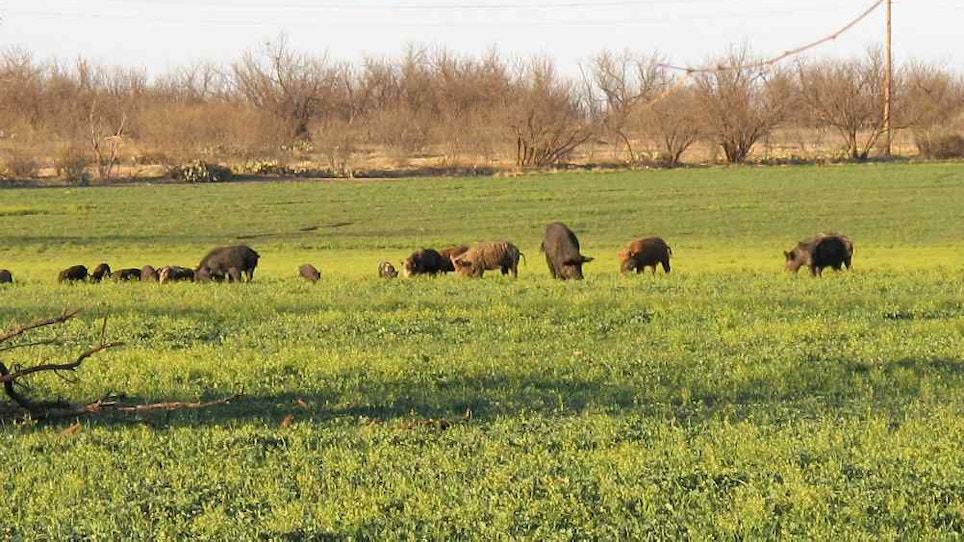
Feral hogs are a problem in numerous states but Colorado officials say they have eliminated them from the Centennial State. (Photo: Alan Clemons)
It seems incomprehensible, given feral pigs' ability to breed and thrive, that someone could eradicate them from a state when so many other wildlife agencies and landowners have had problems with them.
But that's what officials with the Colorado Parks & Wildlife say they've done in the Centennial State. If so, big congratulations to them. I hope they did and hope they don't have any more in the future, although I have my doubts.
Not trying to be Negative Ned here, but eradicating feral swine has proven to be incredibly challenging in other states where they live. Even after 15 years of efforts in Colorado, it seems — and that's a big word — that killing all known feral pigs would be tough to accomplish.
Travis Black, deputy regional manager of Colorado Parks & Wildlife for the southeast region, said the last known feral pig was killed in the southeast corner of the state in 2018. A year later after intense monitoring, including with game cameras and from landowners' reports, there have been no other sightings.
Black told the Colorado Springs Gazette that in 2001 about 250 feral swine were identified in the Big Sandy Creek area of Kiowa County. Another 100 or more were living along the Cimarron River in Baca County. Sounds like good habitat for the animals: water, food, ability to cool off in summer, and escape routes.
Black said the pigs were escaped domestic stock that turned feral. That's easy for them to do in short order. Once a sow has a litter or two, things can get out of hand. According to the Missouri Department of Conservation, females can be mature at 6 months and produce two litters of one to seven piglets every 12–15 months.
Like their domestic cousins, feral swine are intelligent. They move during the seasons to seek the best food sources, be it mast in autumn or agricultural crops in spring and summer. They cause billions in damage and losses each year. Trapping is effective with pens that have gates that drop by remote access. Today's best methods involve trapping the entire sounder. Due to their wariness, that can take time.
Black told the Gazette the swine have been a problem since at least 2001. They became a more acute issue in 2005 due to a disease outbreak that necessitated the destruction of 6,000 domestic pigs. The disease was believed to be spread by feral swine.
The wildlife agency then teamed with the Colorado Department of Agriculture and the U.S. Department of Agriculture's Animal and Plant Inspection Service, Wildlife Services and Forest Service. A plan was created, funding secured and they went to work killing pigs.
Apparently, it has worked.
"A farmer had reported the last feral swine had run out of a cornfield and that same animal was recorded on monitoring cameras, so we were able to find and kill the pig," Black told the Gazette. "We have monitored for the following year and have taken water samples to test for feral swine DNA, and we have since had a year without a confirmed sighting."
That's great news for Colorado.





